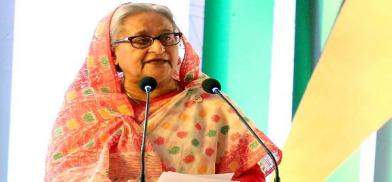Bangladesh achieves 100 percent electrification, announces Prime Minister Sheikh Hasina
Bangladesh achieved the enviable target of electrifying every house in the country, Prime Minister Sheikh Hasina announced on Monday, almost 13 years after the government launched an ambitious rural electrification program

Bangladesh achieved the enviable target of electrifying every house in the country, Prime Minister Sheikh Hasina announced on Monday, almost 13 years after the government launched an ambitious rural electrification program.
"This is the biggest thing that we have been able to light houses of every people," Hasina was quoted as a saying by The Daily Star at an event in the south-central district of Patuakhali, where she inaugurated a 1320 megawatt thermal power plant, built with eco-friendly supercritical technology.
From 2009, when just 47 percent of its 160 million population were under electricity coverage, Bangladesh made remarkable progress in the power sector in the last decade, bringing total annual power generation capacity to 25,514 megawatts— almost five times of 4942 megawatts in 2009.
In 2009, the Hasina government had launched one of the world’s most ambitious rural electrification programs, aiming to provide electricity to 90 million, with the backing of the World Bank and other multilateral agencies. In the past decade, the length of the country's transmission line network expanded from just 8000 km in 2009 to over 13,213 km in 2022.
The remarkable feat - which made it the envy of many countries in South Asia, including India and Pakistan - is achieved in the year when the nation is observing the "Mujib Borsho", marking the birth centenary of Bangladesh’s founding father Sheikh Mujibur Rahman, and the golden jubilee of the country's Independence.
Under Hasina, Bangladesh’s rise as a regional economic power, with a compound annual growth rate of 8.9 percent in exports between 2011-2019, caught the attention of the world in the last few years. However, with economic growth, the country’s energy requirement has also been growing.
From just 27 power plants in 2009, the number rose to 150 in 2022. And, the country still imports over 1000 megawatts from India. Furthermore, the country is also exploring energy cooperation with India, Bhutan, and Nepal.
(SAM)








Post a Comment